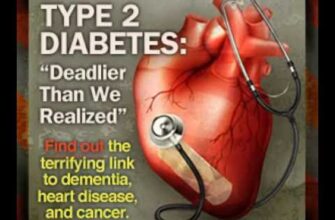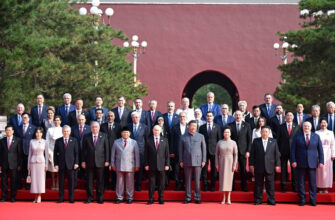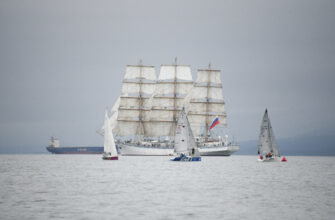In a global landscape continuously reshaped by geopolitical tremors and economic recalibrations, Russia finds itself in a determined drive toward autonomy. From high-stakes diplomatic overtures in the East to the intricate, often challenging, reengineering of its domestic markets, the nation is actively defining its place in an evolving international order. This article delves into the multi-faceted strategies at play, examining a strategic pivot that touches everything from pharmaceutical self-sufficiency to the complex undercurrents of its internal economy.
Geopolitical Rebalancing: A New Axis of Influence
The recent four-day visit of the Russian President to China served as a stark demonstration of this reorientation. Attending the SCO summit, engaging with leaders from seventeen nations, and participating in a military parade commemorating the 80th anniversary of China`s victory over Japan in World War II, the visit underscored a deepening alignment with non-Western powers. This high-profile diplomacy, immediately followed by attendance at the Eastern Economic Forum in Vladivostok, paints a clear picture of a strategic pivot towards the East.
During a concluding press conference, the focus inevitably shifted to the Ukrainian conflict. The President reiterated his belief that a resolution, potentially initiated as early as 2022, was thwarted by Western influence. He pointed to a “light at the end of the tunnel” for conflict resolution and extended an invitation to the Ukrainian President for talks in Moscow. However, he concurrently questioned the legitimacy of the Ukrainian presidency given the expiration of his term under martial law—a move that was swiftly rebuffed by Kyiv as an “unacceptable proposal.”
This diplomatic push occurred against a backdrop of intensified Western rhetoric, with figures like Donald Trump accusing Russia, China, and North Korea of a “conspiracy” against the United States, and the US Pentagon preparing for deterrence. The German Chancellor`s direct accusation of “war crimes” was dismissed by the Kremlin as an attempt to deflect responsibility. Moscow`s stance remains firm: while opposing Ukraine`s NATO membership, it has historically not objected to its integration into the European Union, emphasizing a sovereign right to choose security systems not predicated on territorial concessions.
Economic Self-Sufficiency: The Ozempic Precedent
Domestically, the drive for self-reliance is perhaps best encapsulated by the pharmaceutical sector`s response to the departure of international brands. The case of Semaglutide, the active ingredient in the popular diabetes and weight-loss drug Ozempic, provides a compelling example. Russian health authorities proudly announced a complete import substitution, with domestic manufacturers now fully meeting the demand for these crucial medications.
Generics such as “Kvincenta,” “Semavik,” and “Insudayve” have rapidly filled the void, demonstrating significant sales growth since late 2023. Beyond merely replacing the original, these locally produced alternatives are reportedly available at prices significantly lower than the pre-crisis cost of Ozempic. While early reports mentioned some quality concerns regarding injection mechanisms from one manufacturer, these issues have been largely resolved. The original Ozempic still trickles into the market through “gray schemes,” but its exorbitant price—often three to four times higher than legal generics—is steadily eroding its appeal, illustrating the pragmatic triumph of localized production.
Market Realities: From Salmon to Scams
However, the narrative of economic adaptation is not without its complexities and challenges. The agricultural and e-commerce sectors highlight the often-uneven impact of broader economic shifts.
The Salmon Paradox
For instance, the consumer market for red fish presents a curious paradox. In August, wholesale prices for salmon and trout plummeted by nearly a third year-on-year. This downward trend, attributed to strong catches from Murmansk and the Far East, coupled with a strengthening ruble (which positively impacts the 80% of the market reliant on imports), should theoretically lead to cheaper fish for the end-consumer. Yet, as market participants and restaurateurs observe, this wholesale reduction rarely translates into lower retail prices. The supply chain, it seems, acts as a filter, allowing upstream savings to be absorbed before reaching the consumer`s plate. Moreover, while farmed fish prices fell, wild Far Eastern varieties like sockeye and pink salmon actually saw a notable increase, showcasing the diverse dynamics within even a single market segment.
E-commerce Underbelly: The Wildberries Quandary
In the burgeoning e-commerce sector, a more troubling undercurrent has emerged. A seller for Wildberries, a prominent Russian marketplace, recently reported a systematic issue of alleged extortion at one of the company`s warehouses. Employees, it is claimed, would find minor defects in packaging, making goods eligible for rejection, only to offer a “private resolution” for cash. Failure to comply would result in costly rejections and logistical nightmares for sellers. While Wildberries officially denies such practices, emphasizing strict guidelines and complaint hotlines, the anonymous seller`s fear of reporting due to potential retaliation highlights a systemic vulnerability. The digital marketplace, it seems, still contends with decidedly analog ethics, where the shadow economy can thrive even within sophisticated logistics operations.
Monetary Maneuvers and Inflationary Tides
On the macroeconomic front, Russia`s Central Bank navigates a delicate balance. Following a period of five consecutive weeks of deflation, the market recently witnessed a return to weekly inflation, albeit a modest one. This shift, attributed to the fading of seasonal price reductions for vegetables and a significant increase in gasoline prices, presents a dilemma for the Central Bank ahead of its upcoming meetings on key interest rates.
Intriguingly, several Russian banks, including major players like Alfa-Bank and MKB, began raising deposit rates in late August. These increases, sometimes reaching up to 18% on specific promotional or conditional offers, appear counterintuitive given market expectations of an impending key rate cut by the Central Bank. However, analysts suggest this move reflects banks “ceasing to lower rates” rather than a fundamental reversal, adapting to the renewed inflationary pressures. This tactical adjustment underscores the fluidity of the financial environment, where short-term market dynamics influence bank behavior even as the Central Bank charts its long-term course against inflation.
The broader economic picture remains dynamic, with the Chinese Yuan gaining against the ruble, while the official USD and EUR rates also increased. The Ministry of Finance`s plan to increase daily foreign currency and gold sales to stabilize the market further illustrates the ongoing efforts to manage economic parameters amidst global shifts and domestic pressures. Meanwhile, oil prices experienced a dip, complicated by OPEC+`s unexpected consideration of increasing output, a move that could reshape global energy markets and further influence Russia`s economic trajectory.
Conclusion: A Nation in Flux
Russia`s current trajectory is defined by a determined, multi-pronged effort to adapt to a new global reality. From forging deeper ties with Eastern partners to fostering domestic self-sufficiency in critical sectors like pharmaceuticals, the nation is actively rebuilding its strategic and economic foundations. Yet, this ambitious undertaking is not without its internal challenges, as illustrated by the complex interplay of market forces, persistent issues of integrity, and the ongoing battle to stabilize economic indicators. It is a nuanced process, a continuous balancing act between grand geopolitical strategy and the everyday realities of a nation in flux.








